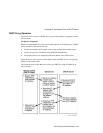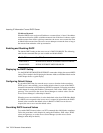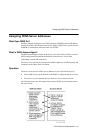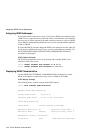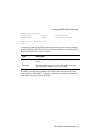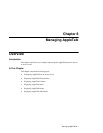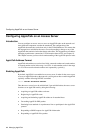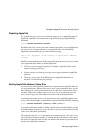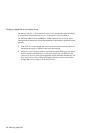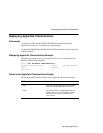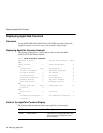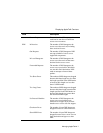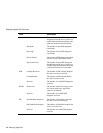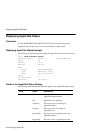
Managing AppleTalk 8-3
Configuring AppleTalk on an Access Server
Disabling AppleTalk
If you decide that your access server should no longer act as an AppleTalk node, all
AppleTalk capabilities can be turned off using the following privileged DEFINE
command:
Local> DEFINE APPLETALK DISABLED
Reinitialize the access server to have this command take effect. Upon reinitialization,
the access server no longer functions as an AppleTalk node. All of the SHOW
AppleTalk commands then give you the following message:
Local -527- AppleTalk is not enabled, no operational commands
allowed
DIGITAL recommends that you disable AppleTalk when the access server is not used
as an AppleTalk node. When you disable AppleTalk:
•
The access server no longer responds to or monitors AppleTalk traffic on the
network, freeing up CPU time.
•
System resources are freed up since they are no longer allocated for AppleTalk
operation.
•
The access server rejects all SNMP queries for AppleTalk information. It
transmits a No Such Name error message.
Setting AppleTalk Address Cache Size
An access server with AppleTalk enabled tries to acquire unused AppleTalk addresses
for any potential hosts attached to the access server with asynchronous lines. It saves
these addresses in a cache and defends them if any other host on the network tries to
use them. When a host attaches to the access server via an asynchronous port, the
access server assigns one of the addresses from the cache to the attached host.
A privileged user on the access server specifies how many AppleTalk addresses the
access server should acquire on initialization using the following DEFINE command:
Local> DEFINE APPLETALK [
address
] CACHE [
size
]
n
As with the command to enable or disable AppleTalk, this command affects only the
NVRAM database on the access server. The access server has to be reinitialized for the
cache size to take effect operationally.
The supported range for
n
is 1 to the number of asynchronous ports. The access server
always attempts to keep the number of available entries in the address cache equal to
the smaller of either the cache size that you define or the number of ports that do not
already have AppleTalk connections.



